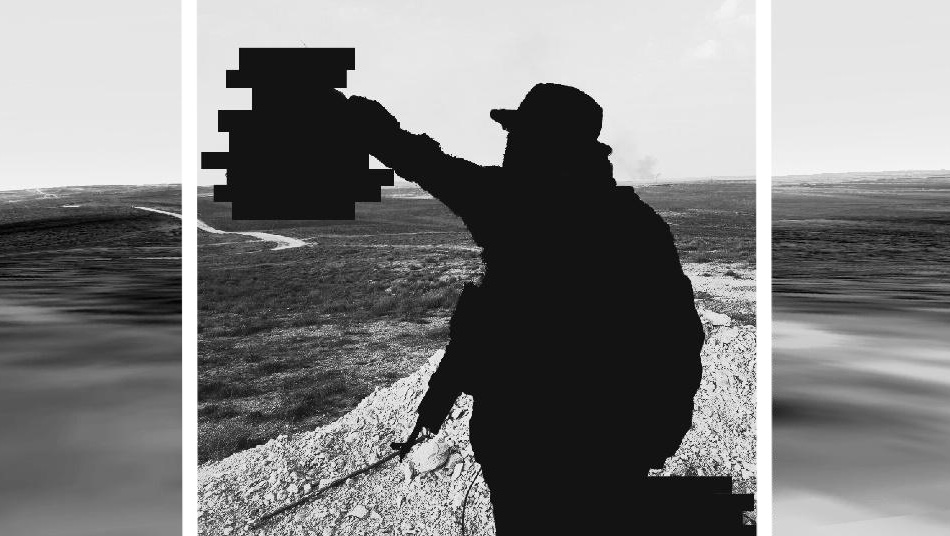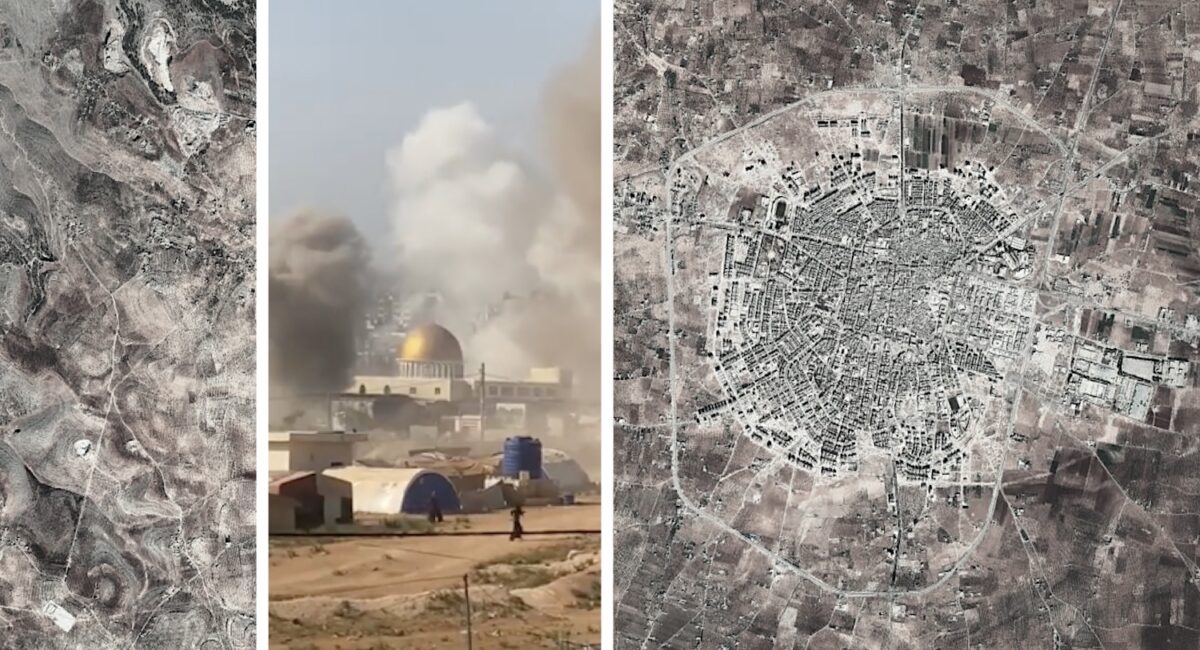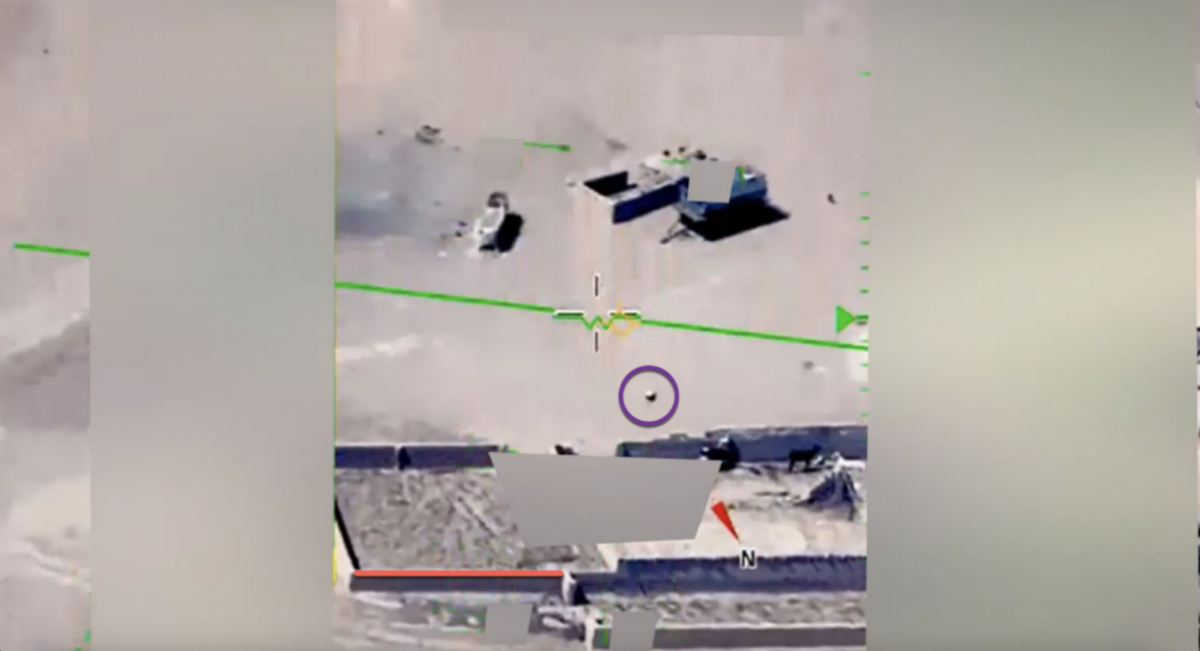Striving for "the Grandest Epics": Forecasting the Future of Jund al-Aqsa

A Jund al-Aqsa fighter raises the group’s flag after taking the village of Morek in northern Hama governorate last year.
The Syrian civil war has given rise to several independent jihadist groups vying for recruits and resources amidst the backdrop of the wider schism between al-Qaida and the Islamic State. Chief among these is Jund al-Aqsa, or the “Soldiers of al-Aqsa Mosque,” a splinter group from al-Qaida active in the northern Syrian governorates of Latakia, Idlib, and Hama. As a “third-way” jihadist group that is ostensibly neutral in the militant Salafi schism, Jund al-Aqsa is an entrepreneur of political violence, seeking to establish a viable role for itself among the constellation of armed groups across Syria. By analyzing the group’s operational history and ideology, it is possible to approximate Jund al-Aqsa’s likely trajectory in the Syrian theater. Although Jund al-Aqsa has carved out a niche for itself in a dazzlingly complex landscape of actors, persistent friction with other armed groups and the attractiveness of more established Salafi outfits confine Jund al-Aqsa to a precarious position. Considering the delicate balancing act that Jund al-Aqsa must play between al-Qaida and the Islamic State, the most likely course of events is that the organization will either dissipate or be incorporated into a larger organization. Given the cumulative handicaps arrayed against smaller independent jihadist outlets, it is unlikely that Jund al-Aqsa will manage to retain its independence or grow appreciably in the medium term.
Entrepreneurial jihad: branding in the Salafi marketplace
Entrepreneurs of political violence are likely to arise in the chaos of civil wars, and in the Syrian Sunni landscape such actors are engaged in a unique form of competitive militancy, wherein a range of actors bid over a finite supply of recruits, arms, and territory and endeavor to marshal these resources into their networks. Entrepreneurs of political violence are able to tap into greater narratives, steer resources, and solidify political connections to buttress their cause. The Syrian civil war has incubated a host of Salafi armed groups spanning from the quasi-mainstream Ahrar al-Sham to Jabhat al-Nusra, al-Qaida’s official affiliate in the Levant, and Jund al-Aqsa is but one of many jihadist armed groups engaging in competition and coordination across this greater militant Salafi milieu. Other similarly sized entrepreneurial jihadist groups that are nominally unaffiliated with either al-Qaida or the Islamic State include Liwa Shuhada Yarmouk and the Islamic Muthanna Movement in southern Syria, as well as a small array of groups in northern Syria mostly composed of fighters from the Caucasus, such as Jund al-Sham and Ajnad al-Kavkav in Latakia and the recently minted Jaish al-Usro in Aleppo.
Jund al-Aqsa split from Jabhat al-Nusra under the aegis of Sheikh Abdul Aziz al Qatari in September 2013 in the early stages of fitna, or schism, between al-Qaida and the Islamic State. Qatari’s split of the Jund al-Aqsa fighting unit from Jabhat al-Nusra proper perhaps signaled his willingness to act as a potential mediator of the fitna, a role that his death in 2014 would preclude from coming to fruition. While some analysts have suggested that Jund al-Aqsa remains an al-Qaida “front group,” it remains notionally independent and acts in its own interests when it comes to navigating rebel politics and staging offensives. Nevertheless, its imagery and ideology remain firmly within the Salafi-jihadist camp and reflect the vision of Qatari, himself a former companion of Osama bin Laden and Aymen al-Zawahiri. Its current emir, Abu Dhar al-Najdi al-Harethi, is a Saudi who likely derives his kunya, or nom de guerre, from Abu Dhar al-Jafari al-Kinani, one of the earliest converts to Islam. Consonant with modern Salafi thought, Jund al-Aqsa also cites Ibn Tamiyyah in pivotal decisions. Jund al-Aqsa propaganda emphasizes the necessity of pious Sunnis to resist the “state of Bashar” and protect the Sunni ummah across Syria, Iraq, and Yemen. This rhetoric taps into historic militant Salafi appeals for solidary action in the face of religious persecution and government oppression in the Islamic world. Similarly, Jund al-Aqsa deploys video propaganda congruent with its jihadist competitors, setting nasheeds, or Islamic A Capella songs, over footage of combat recorded via drone or helmet cameras. Nor is success the only angle highlighted in its digital propaganda, as the death of the cameraman and his crew of gunmen is highlighted in a recent Jund al-Aqsa release to emphasize their martyrdom. Despite its heated rhetoric, like Jabhat al-Nusra, Jund al-Aqsa does not appear to be oriented chiefly against the West but instead emphasizes the necessity of fighting in Syria first and foremost, which has the added benefit of leveraging the path dependence of prospective jihadists hoping to join the struggle. That a US airstrike killed Said Arif, a Jund al-Aqsa emir and veteran of the al-Qaida camps in Afghanistan from the 1990s, however, suggests the group could harbor undeclared offensive aspirations. In spite of this, Jund al-Aqsa’s rhetorical emphasis on protecting the Sunni ummah in bilad al-Sham is more directly descended from Abdullah Azzam’s concepts of jihad in defense of Islamic lands than bin Laden and Zawahiri’s strategy of offensive jihad against the West.

Writing on the wall in Khan Sheikhoun implores women to wear niqab on threat of death. The attribution that draws on language of the Islamic State – “soldiers of the caliphate” – leaves some ambiguity, suggesting perhaps a local-level action.
Since Jund al-Aqsa’s governing reach is limited to a handful of villages in Idlib and Hama, it is difficult to assess its governing style. That Jund al-Aqsa evidently tolerates some limited independent civil society in the sparsely populated frontline hamlet of Morek suggests that the group’s approach to the implementation of sharia law might replicate that of Jabhat al-Nusra, incorporating lessons imparted by militant Salafi theorists like Abu Musab al-Suri or Nasir al-Wuhayshi, stressing the necessity of playing a political long-game and implementing Islamic law in gradual steps. The appearance of a graffito in the Idlib town of Khan Sheikhoun attributed to Jund al-Aqsa imploring women to wear niqab upon threat of death suggests otherwise, however, but the ambiguous signature of “soldiers of the caliphate” weakens the notion that it was centrally directed. One cannot discount that it was drawn by IS-sympathetic members of the group, perhaps illustrating some level of internal preference divergence among group members and hinting at sympathies toward the Islamic State.
Such entrepreneurial jihadist groups have several potential directions in which they could develop. Historically, smaller groups in the Syrian civil war have either controlled small swathes of territory or gradually merged with other armed groups or rebranded as the war progressed. Recent clashes between IS-sympathetic rebel groups Liwa Shuhada Yarmouk and the Islamic Muthanna Movement with other rebel groups in Syria’s Deraa province underscore the risk of straddling the AQ/IS divide, and this infighting showcases a template of what could happen should a third-way jihadist group fall out of favor with its rebel peers. Given Jund al-Aqsa’s ambiguity on the fitna, it runs the serious risk of being forced into a defensive and likely indefensible position should its loyalties be tested. If Jund al-Aqsa’s role were to come under external pressure, its position as a jihadist entrepreneur could cease to exist as it is forced to make difficult decisions, much as the once IS-leaning Jaish al-Muhajireen wal-Ansar eventually pledged its loyalty to Jabhat al-Nusra in September 2015.
Operational balancing: navigating the AQ/IS fitna on the battlefield
Given its membership of perhaps no more than one thousand core fighters from Syria and abroad, Jund al-Aqsa has played an outsized role on the northern Syria front since its detachment from Jabhat al-Nusra. A former participant in the Jaish al-Fateh rebel coalition, Jund al-Aqsa helped spearhead the spring 2015 offensive on Idlib city and its exurbs where its fighters garnered a sterling reputation as effective shock troops. Following the Russian intervention in late 2015, Jund al-Aqsa fighters were instrumental in retaking the village of Morek in northern Hama despite Russian air attacks, which is notable by virtue of it being one of the few rebel gains sustained since the apex of the Russian air campaign. As a group that is not party to the countrywide ceasefire, Jund al-Aqsa has continued to engage in limited offensive roles in Hama province alongside the Turkistan Islamic Party, a Uighur militant group, mobilizing limited armor and artillery. Yet the AQ/IS fitna continues to loom large over Jund al-Aqsa’s role in northern Syria. As such, the group occupies a gray area in the Salafi-jihadist landscape, straddling the border between al-Qaida and the Islamic State. This awkward position eventually forced Jund al-Aqsa to abandon the Jaish al-Fateh coalition on the grounds that Jund al-Aqsa’s interpretation of Islamic law prohibits offensive combat against the Islamic State, a stipulation that JaF coalition member Ahrar al-Sham had requested of all group members.

Jund al-Aqsa fields a limited number of armor pieces. Seen here is a T-55A captured from Syrian government forces.
This apparent malice-toward-none approach has led to allegations from other rebels of clandestine sympathy with the Islamic State. Elements of Jund al-Aqsa, in tandem with Aleppo-area Caucasus militants, reportedly launched a simultaneous offensive with the Islamic State to briefly sever the Aleppo-Hama highway at the village of Khanasser in February, underscoring what some in the Syrian opposition consider to be the unreliable nature of Jund al-Aqsa fighters. It’s important to note, however, that other sources have denied Jund al-Aqsa’s involvement and suggest that a small cohort of fighters known as Liwa Tawba – which recently defected to the Islamic State and relocated to Raqqa city – was instead involved. Similarly, Jaish al-Fateh’s execution of a handful of Jund al-Aqsa fighters in Idlib city in January on charges of carrying out political assassinations illustrates the level of skepticism senior members of the Syrian rebel leadership cast on Jund al-Aqsa’s foot soldiers. For some rebels, the executions seemed to validate claims that Jund al-Aqsa fighters have doubled as IS sleeper cells seeking to eliminate rival members of the Islamist opposition in Idlib. That merely two months later Ahrar al-Sham was forced to disperse a memorial that Jund al-Aqsa fighters held in the town of Sarmin for a fallen Islamic State commander has done little to assuage fears of disloyalty or subversion. Such divisions between Jund al-Aqsa and the wider opposition are hardly new, as evinced by the internecine struggle in the summer of 2014 between Jund al-Aqsa and the US-backed Syria Revolutionaries Front in Idlib province.

A pro-Jund al-Aqsa account allegedly based in Idlib takes credit on behalf of Jund al-Aqsa for the assassination of Ahrar al-Sham members in Binnish on April 24. Other jihadist social media accounts allege that this account is a pro-IS front intended to sow mistrust of Jund al-Aqsa.
As such, recent friction between Jabhat al-Nusra and Jund al-Aqsa with Division 13 of the Free Syrian Army could be a harbinger of difficulties to come. In response to the recent resumption of pro-FSA protests in the Idlib town of Ma’arat al-Numan, Jabhat al-Nusra and Jund al-Aqsa shuttered the Division 13 headquarters and seized its arms. Despite this crackdown, popular resistance has continued against the jihadist presence in the city. These protests – which have featured slogans such as “Jund al-Aqsa are Da’esh” – must give pause to jihadists who wish to wield temporal authority and win over the hearts and minds of the local populace. The persistence of this tension between Salafis and relative moderates among the backdrop of the AQ/IS schism suggests that the path for third-way jihadists could be untenable in the long term. Small jihadist outlets will not gain any political capital should Syrian society continue to mobilize against Salafi rule.
In light of these challenges, Jund al-Aqsa’s leaders must accommodate an unusual niche, balancing between a leadership that is deeply influenced by al-Qaida and a base that sometimes appears sympathetic to the Islamic State. As entrepreneurial jihadists, they are uniquely positioned to attract recruits who might find this “third way” appealing, but paradoxically the liabilities of managing this unwieldy arrangement constitute a fundamental structural weakness. As Jund al-Aqsa continues to wither political challenges and suffer from internal division among its ranks, its future will become increasingly uncertain. This risk is best personified in the February re-defection of several senior leaders of Jund al-Aqsa, including sharia committee members, back to Jabhat al-Nusra on the grounds that greater unity in jihad is needed.
Consequently, Jund al-Aqsa is not likely to survive in the long term. As a smaller competitor, its role as an entrepreneurial jihadist group means that without continued success and strong internal cohesion it will either be subsumed into a larger, more successful jihadist outfit or collapse altogether. Given Jund al-Aqsa’s operational history and relations with al-Qaida, it is most likely that the group will dissolve or be integrated into Jabhat al-Nusra in the near or medium-term future. A black swan event, however, such as the sudden collapse of the Islamic State and the migration of many of its former fighters in northern Syria in search of political safe havens could prove fortuitous for a group like Jund al-Aqsa that has so far navigated the complex currents of internecine jihadist conflict. But a bleaker outlook for Jund al-Aqsa mirrors that of Liwa Shuhada Yarmouk in southern Syria – should Jund al-Aqsa fail to ameliorate concerns of secret sympathies with IS or dampen the preference divergence of its group members it risks being devoured by the schools of rebels among which it swims.
I would like to extend gratitude to Aymenn al-Tamimi in addition to the staff at The Long War Journal for their pioneering work on Jund al-Aqsa, as well as to Dan Byman for critiquing an early draft of this article. The over-arching thesis of violent political entrepreneurship is owed to the scholarship of Stathis Kalyvas and Charles Tilly.


